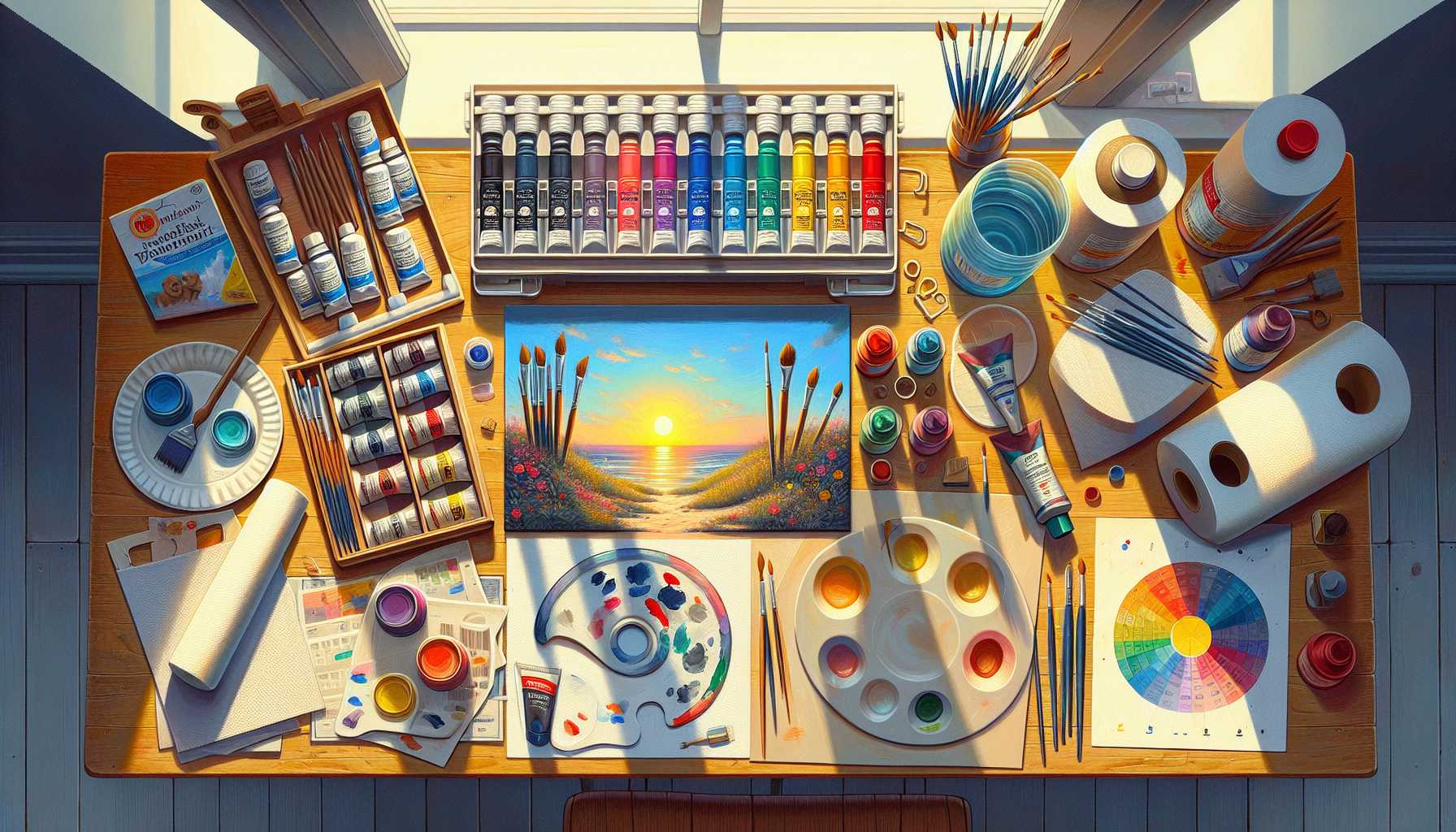Ever felt an urge to unleash your inner artist through painting, but found the initiating step daunting? You’re certainly not alone. This simplified guide will help break down everything you need to kickstart your artistic pursuit.
Essential Artifacts You Should Posses
Starting with the appropriate tools can enhance your early painting experience. Here’s what your introductory shopping list should look like:
– A beginner’s set of acrylic paints
– 2-3 diverse-sized synthetic brushes
– Canvas paper or canvas boards
– A plastic palette
– An assortment of paper towels
– A water jar
Professional tip: It need not be expensive! Starting with “student-grade” materials while learning can be strategic.
Grasp the Basics of Color
Colors are about to become your closest allies. Let’s decode them:
– Primary colors: Red, blue, and yellow
– Secondary colors: Green, purple, and orange
– Color blending is akin to cooking – always start with small proportions
– Having a color wheel within reach can be beneficial
Your Maiden Brushstrokes
Excited to create your maiden masterpiece? Here are beginner-friendly exercises to try:
1. Practice sketching straight lines
2. Create elementary shapes
3. Explore diverse brush pressures
4. Experiment with varying proportions of water
Remember: Everyone’s initial painting isn’t expected to be a masterpiece!
Elementary Tasks to Begin With
Let’s start implementing these skills:
– Paint a simple yet appealing sunset
– Construct an abstract design
– Try crafting a basic still life
– Generate color swatches
Typical Beginner’s Errors (And How to Dodge Them)
Mistakes are steppingstones to learning. Here’s how to turn them into lessons:
– Avoid the overuse of water
– Refrain from mixing all colors together
– Don’t be overly self-critical
– Never rush through the process
Cultivating Healthy Practices
Consistency is key to triumphant outcomes:
– Ensure your brushes are correctly cleaned
– Maintain an orderly workspace
– Always date your practice items
– Document your progress through pictures
Progressing Further
As y
